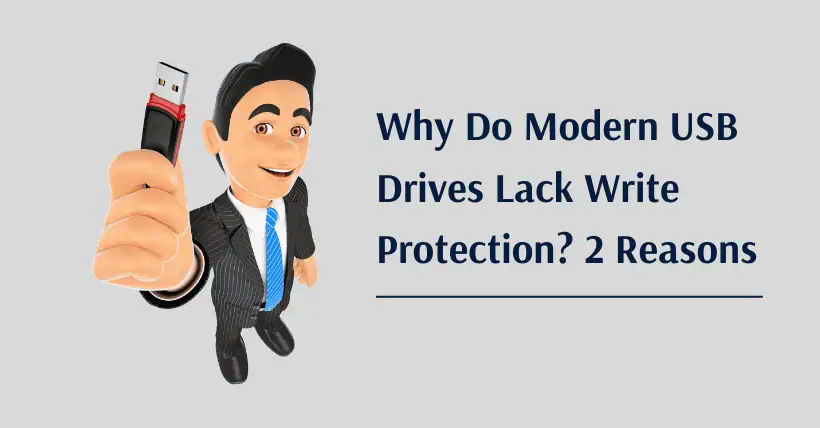USB flash drives (U-disks) typically lack write protection for two main reasons: patent issues and practicality.
1. Patents of USB Flash Drives
There are patent barriers related to implementing mechanical write protection switches on devices like USB flash drives. Manufacturers have to either pay for licensing or avoid using the technology. Given that USB drives are low-margin products with tight competition, most of the profits go to flash memory manufacturers. Adding a mechanical switch for write protection would significantly increase production costs, which manufacturers are unwilling to bear in an already highly competitive market.
2. Practicality
Write protection is not always effective, and designing it can be complex.
The write protection mechanism for USB drives (and SD card readers) relies on the host (the computer) sending a command called Mode Sense. If the USB drive responds with a specific flag, it indicates that the drive is in read-only mode (write-protected). However, this flag is a software-based feature. In some cases, even when the device shows as write-protected, it can still be written to if a write command is issued, meaning the protection isn’t entirely foolproof.
Additionally, the USB protocol stack has a characteristic where all requests must be initiated by the host. Devices cannot autonomously report their status to the host. This means that after flipping a write protection switch, the host needs to re-query the device to detect the change. If the host doesn’t actively check for this status update, the system might not recognize that the device is now write-protected. Continuously polling for device status can also waste bandwidth and resources.
For a complete write protection feature to work, the hardware would need to block write operations at the controller level, which can be demanding for the simple controllers used in USB flash drives. On the software side, the entire write protection protocol would need to be supported, including status reporting for Media Change and Write Protect, potentially even requiring cooperation from the host-side drivers. This adds to the complexity and development effort.
3. Why It’s Rarely Implemented
Given the complexity and cost, most manufacturers avoid adding this feature. USB flash drives are typically mass-market devices, and even a small increase in price due to added components could reduce sales. Write protection is not a highly demanded feature, and it’s not critical for most users, so manufacturers don’t see a strong enough reason to include it.
Additionally, in cases where a USB drive becomes unwritable due to damage or failure, it’s usually caused by other issues, not related to intentional write protection mechanisms.
Related:

Disclaimer:
- This channel does not make any representations or warranties regarding the availability, accuracy, timeliness, effectiveness, or completeness of any information posted. It hereby disclaims any liability or consequences arising from the use of the information.
- This channel is non-commercial and non-profit. The re-posted content does not signify endorsement of its views or responsibility for its authenticity. It does not intend to constitute any other guidance. This channel is not liable for any inaccuracies or errors in the re-posted or published information, directly or indirectly.
- Some data, materials, text, images, etc., used in this channel are sourced from the internet, and all reposts are duly credited to their sources. If you discover any work that infringes on your intellectual property rights or personal legal interests, please contact us, and we will promptly modify or remove it.



